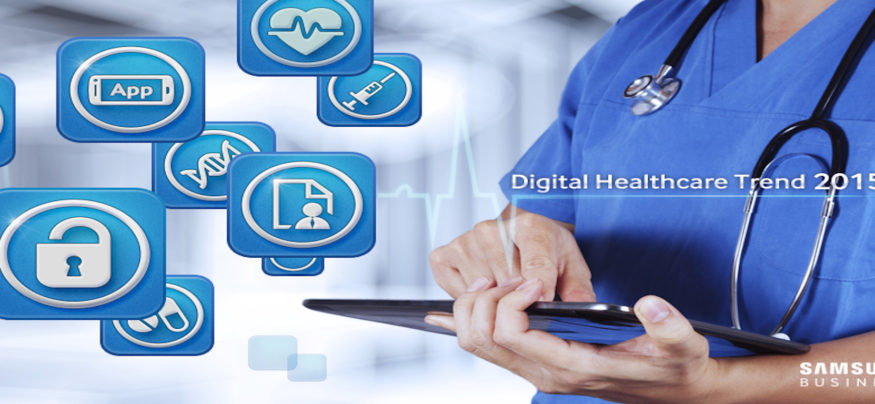With the help of patient care digitalization and the rise of mobile devices, the landscape of healthcare has been changing dramatically. According to Deloitte’s 2015 global life sciences sector outlook, global healthcare spending has been growing by 5.2 percent annually. Leading global tech players are paving new ways for mobile devices and wearables to revolutionize the healthcare industry landscape.
It’s a burgeoning field, and here are three digital healthcare trends to keep an eye on in 2015.
Healthcare Apps and DIY Healthcare on the Rise
It is no longer news that patients are e-mailing doctors health records that include tests done via mobile apps. They can even do an electrocardiogram on a portable device, and there is a wide range of healthcare apps already available in the market. Simple activity trackers like Samsung’s S Health offer a nice and easy way to keep records of activities such as your heart rate and the number of steps you’ve taken. More sophisticated medical apps are also making their way to market, giving people the ability to check insulin levels, vital signs and more. This “Do-it-Yourself” wellness trend will continue in 2015 and beyond, especially as the U.S. Food and Drug Administration plans to review a record number of apps for efficacy to ensure they pass muster.
Patient Documents Go Digital
We will also see fewer piles of patient records. According to the U.S. Centers for Disease Control, the percentage of office-based physicians digitizing patient records increased from 38 percent to 78 percent between 2008 and 2013, and this figure will continue to rise.
Today’s printers are equipped with tools to help healthcare professionals convert the existing hardcopy patient records into electronic copies with minimal effort. Scanning features can predesignate a destination for the file, such as an email account or a folder on a server, making it easy to organize and store digital files. Digitizing hardcopy medical records also enables a seamless transfer of files and medical history between doctors and clinics. This change simplifies the collaborative patient care process, and will eventually enhance the quality of healthcare, from individual patient care to cross-country clinical research.
Privacy, Privacy and More Privacy
Convenience does not come without a price. Increased document digitization and the mobile healthcare trend have subjected patient information including social security numbers and credit card information to cyber breaches.
According to a recent PwC survey, 68 percent of a survey respondents said they were concerned about the security of data stored in smartphone health apps. Another 76 percent said they were concerned about their medical data. As they become aware of the potential threat, patients opting for more protection over more convenience, and hospitals are scrambling to comply with policies and technology designed to protect patient records.
How do we find a balance between convenience, improved healthcare and security concerns? As obvious as it may sound, enabling a smooth transition to a comprehensive digital healthcare system certainly requires mitigating the risk of data breaches with a robust security system. This in turn requires health systems to keep their eyes on both internal and external threats with solid authentication features for access to all devices. Network servers are not the only things to be protected. Patients should also expect their healthcare providers to be using printers with security features.
The healthcare trend of digitization is bringing change to the healthcare industry around the world, and providers can use this opportunity to create a more collaborative, secure and easier workflow.
Learn more about how healthcare technology solutions can enhance efficiencies and improve the patient experience.








